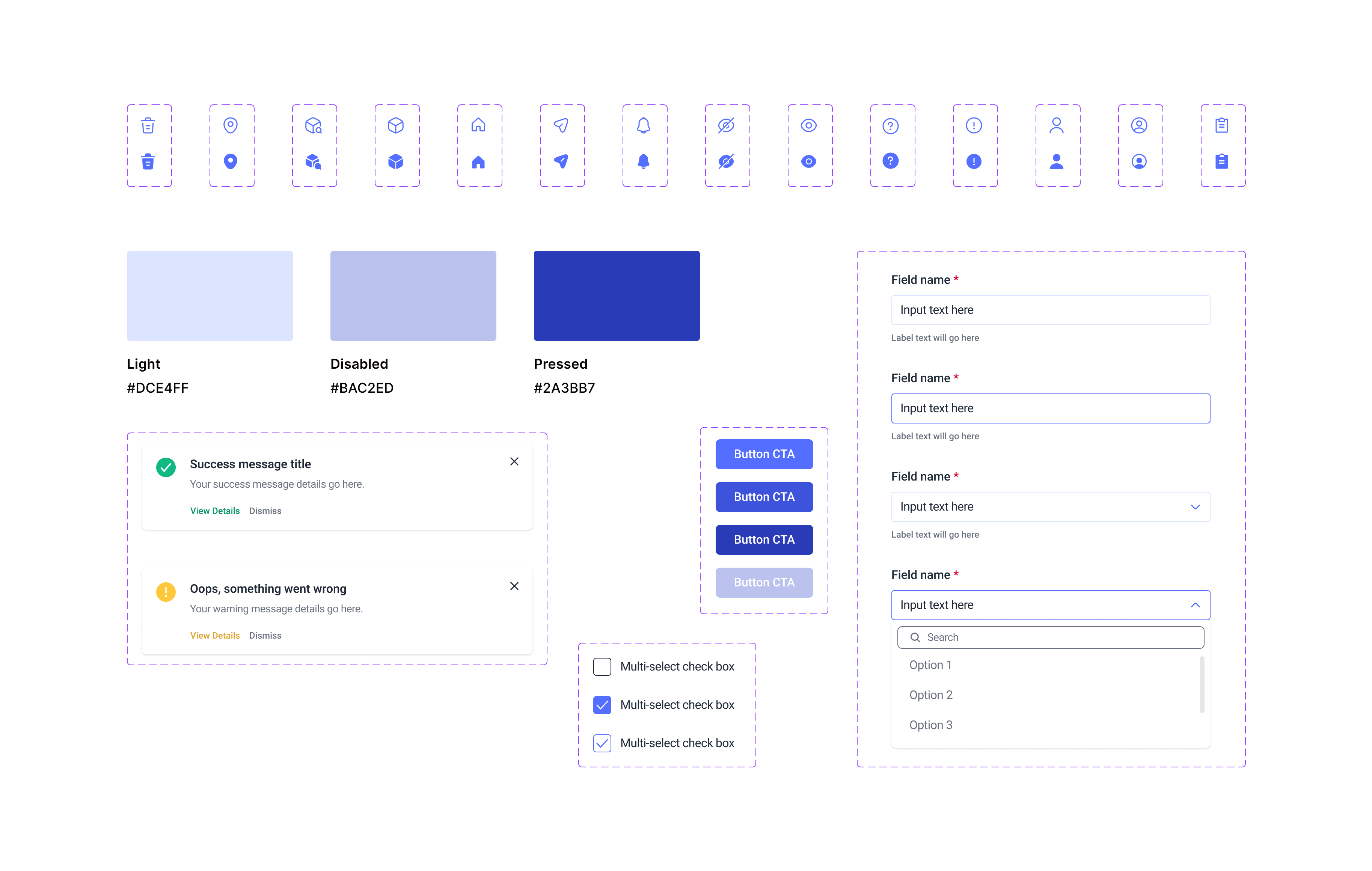INTELI, Intelligent Trusted Supply Chain for Aerospace & Defence - Case Study
PROFESSIONAL PROJECT
- Award-Winning Project: Outstanding Achievement Global Winner - 2023 BAE Systems Global Supply Chain Awards
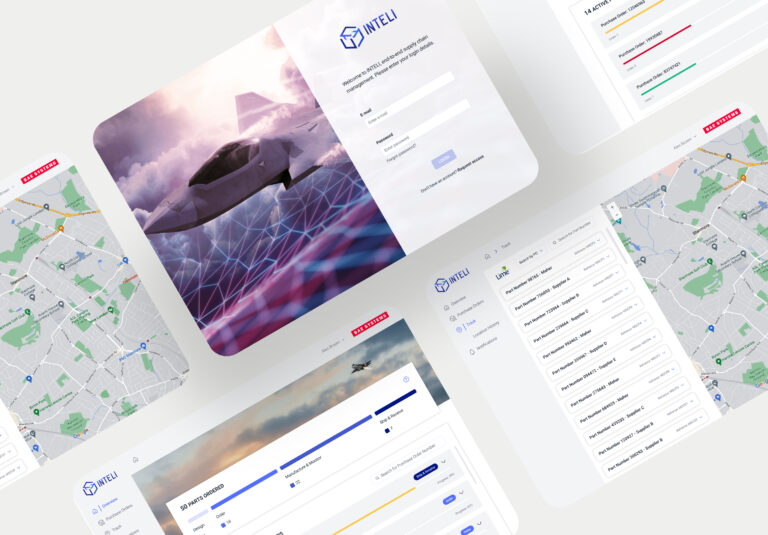
Most of this material is protected by a non-disclosure agreement, so I have omitted confidential information in this case study.
BRIEF
Context
Developed by BAE Systems, INTELI is a blockchain-powered supply chain management platform designed to address the complex demands of the aerospace and defense sector. Its goal is to provide end-to-end visibility, real-time tracking powered by IoT, and streamlined collaboration processes.
Project Summary
August 2022 – October 2022
United Kingdom
My Role
As the Lead UX/UI Designer, I spearheaded the design strategy and execution for INTELI. My key responsibilities included guiding and mentoring a team of two designers, setting expectations, delegating tasks, and ensuring quality design output aligned with the overall project vision.
challenge
The Disrupted Aerospace Supply Chain
The aerospace & defence supply chain suffered from significant inefficiencies due to:
- Lack of Visibility: No centralised view of order progress, causing delays and an inability to address priority issues.
- Manual Processes: Time-consuming and error-prone manual data entry and approvals.
- Siloed Systems: Disjointed workflows across multiple systems, leading to fragmented data and communication breakdowns.
research
Understanding the Users
INTELI would serve both buyer and supplier organizations. We conducted thorough user research to define personas with their unique needs and pain points:
- Buyer: Manages pricing, Purchase Orders (POs), tracks progress, and processes invoices.
- Procurement Planner: Handles customer demands, requiring full visibility for prioritization.
- Manufacturing Engineer: Creates designs, specifications, shares with suppliers, and reviews quality certificates.
- Production Planner: Manages capacity, scheduling, and production line performance.
- Supplier: Acknowledges orders, handles manufacturing, provides quality certificates, often involving subcontractors.
design process
The INTELI Blueprint: Analysing the As-Is Process
We kicked off with a comprehensive experience review of the current end-to-end user journey.
We conducted interviews and workshops to collaboratively map the existing end-to-end user journey. This revealed patterns of behavior, pain points, and key opportunity areas.
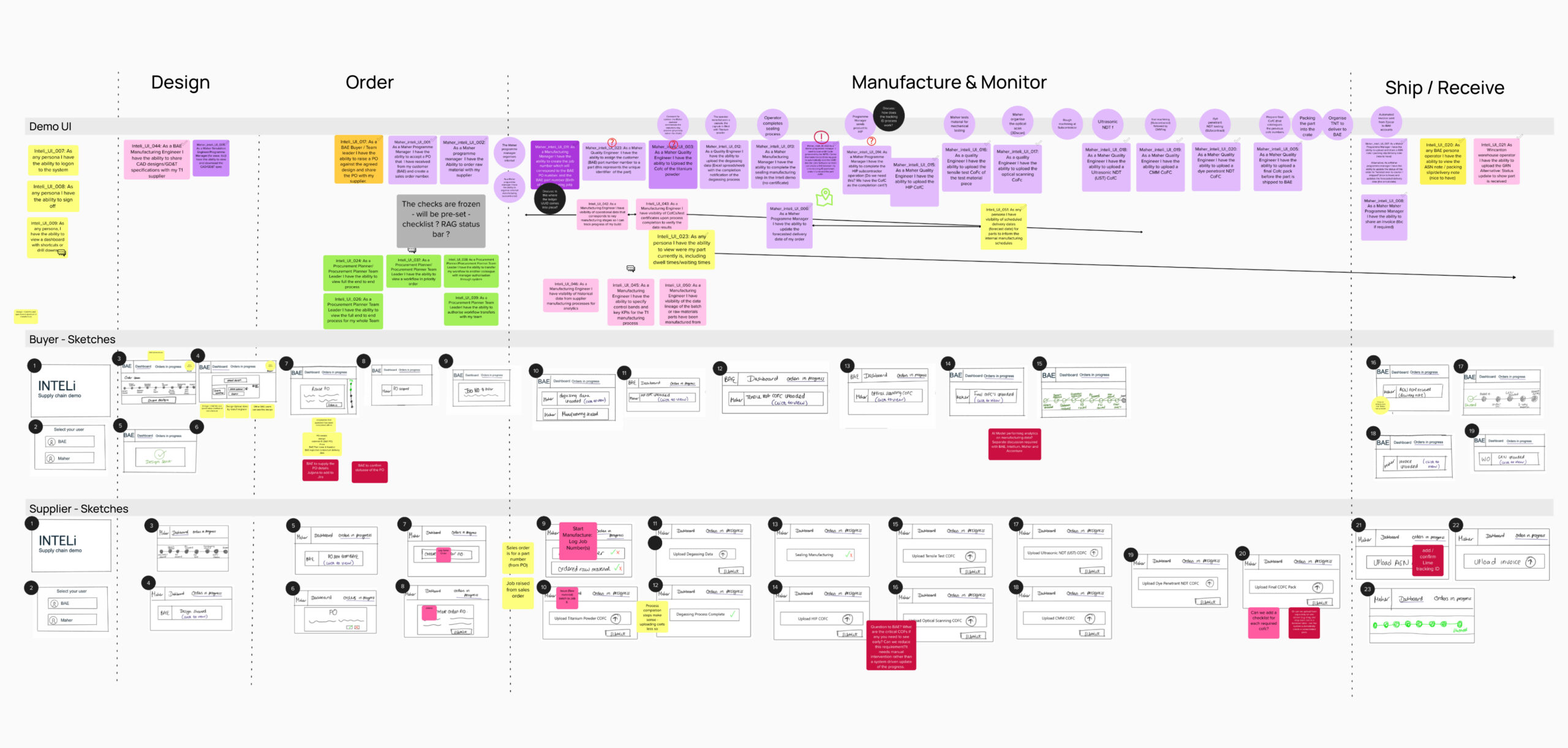
Targeting Pain Points: Designing for Efficiency
Key phases of the solution architecture
Based on the journey map, we brainstormed solutions addressing the core problems, focusing on the following phases for our MVP:
- Design Submission
- Order Creation
- Manufacturing & Monitoring
- Shipment & Receipt
Mid-fidelity wireframes were built and used for iterative usability testing with representative users. This provided valuable feedback for design improvements.
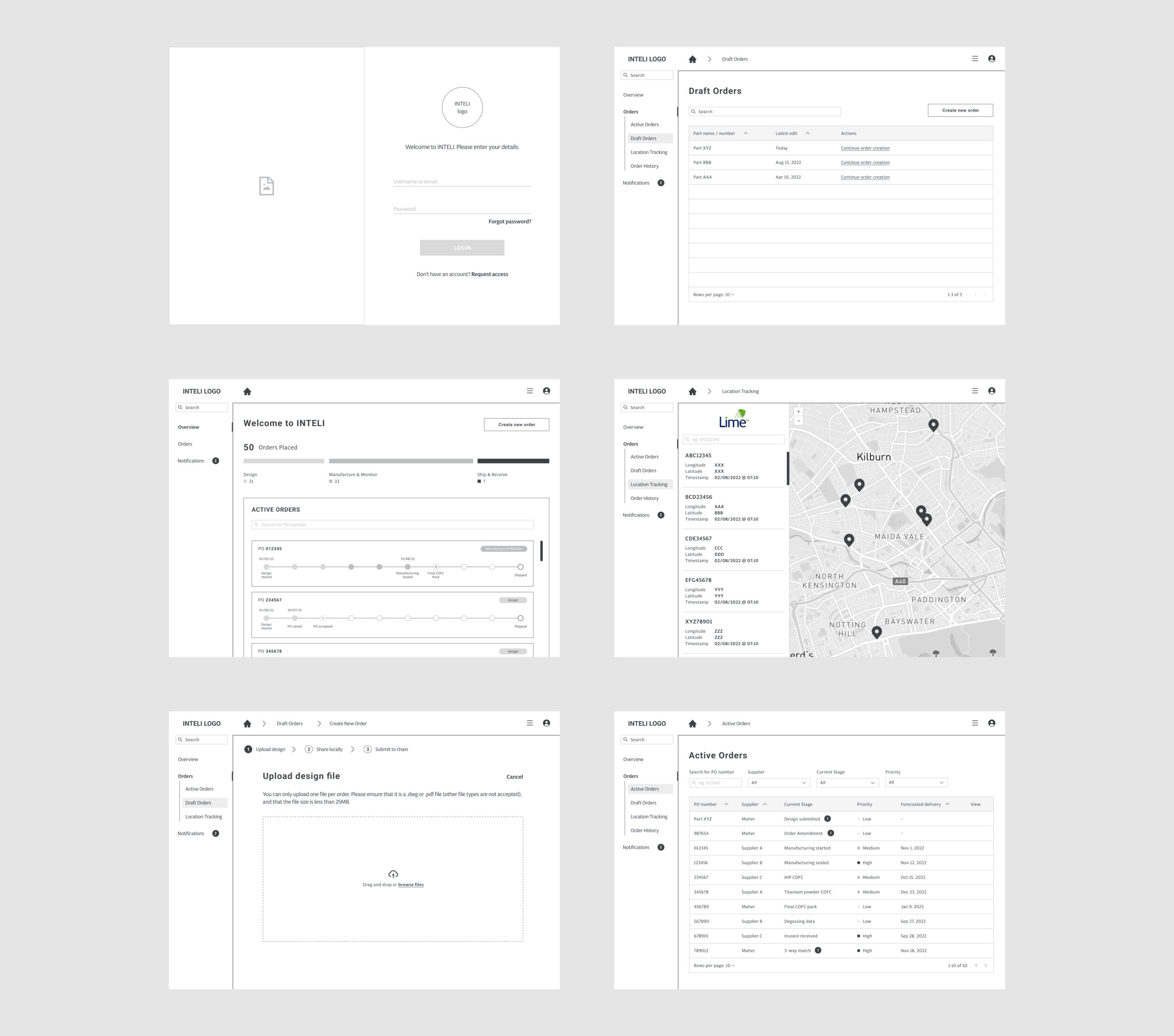
solution
Delivering Transparency and Efficiency: INTELI in Action
INTELI addresses the identified supply chain inefficiencies with the following features:
Real-time Visibility & Updates
All users track order progress, receive live manufacturing updates, and view RAG statuses for delivery forecasts.
Impact: Reduced lead times and proactive issue resolution.
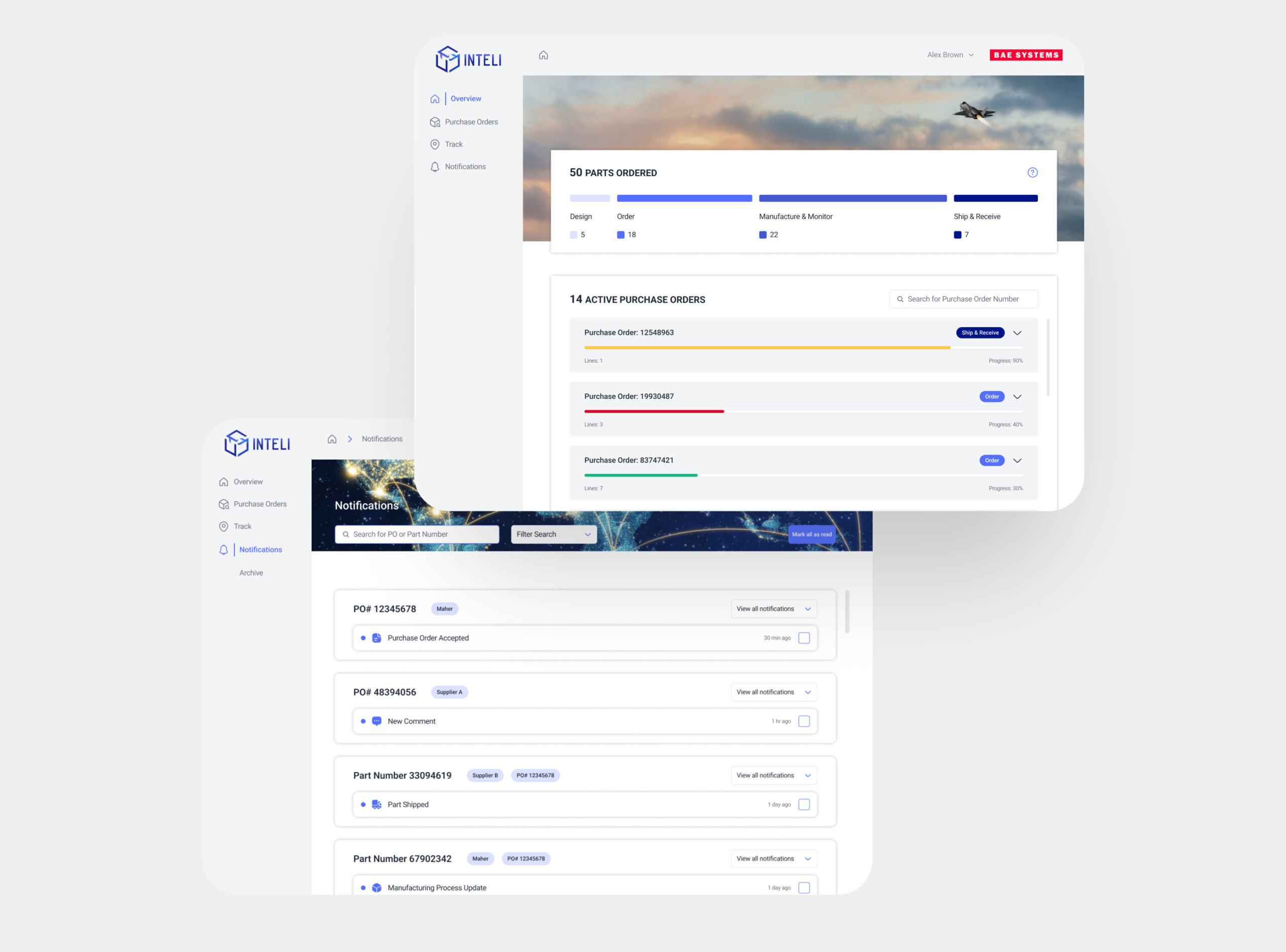
Location Tracking
IoT-enabled geofencing tracks parts during manufacturing and shipment for accurate delivery planning and investigation of delays.
Impact: Improved logistics efficiency and resource planning.
Centralised File Management
Designs, POs, certificates, invoices, and delivery notes are uploaded, shared, and managed within INTELI. Online form features reduce manual errors.
Impact: Eliminates email chains, speeds up approvals, and creates a single source of truth.
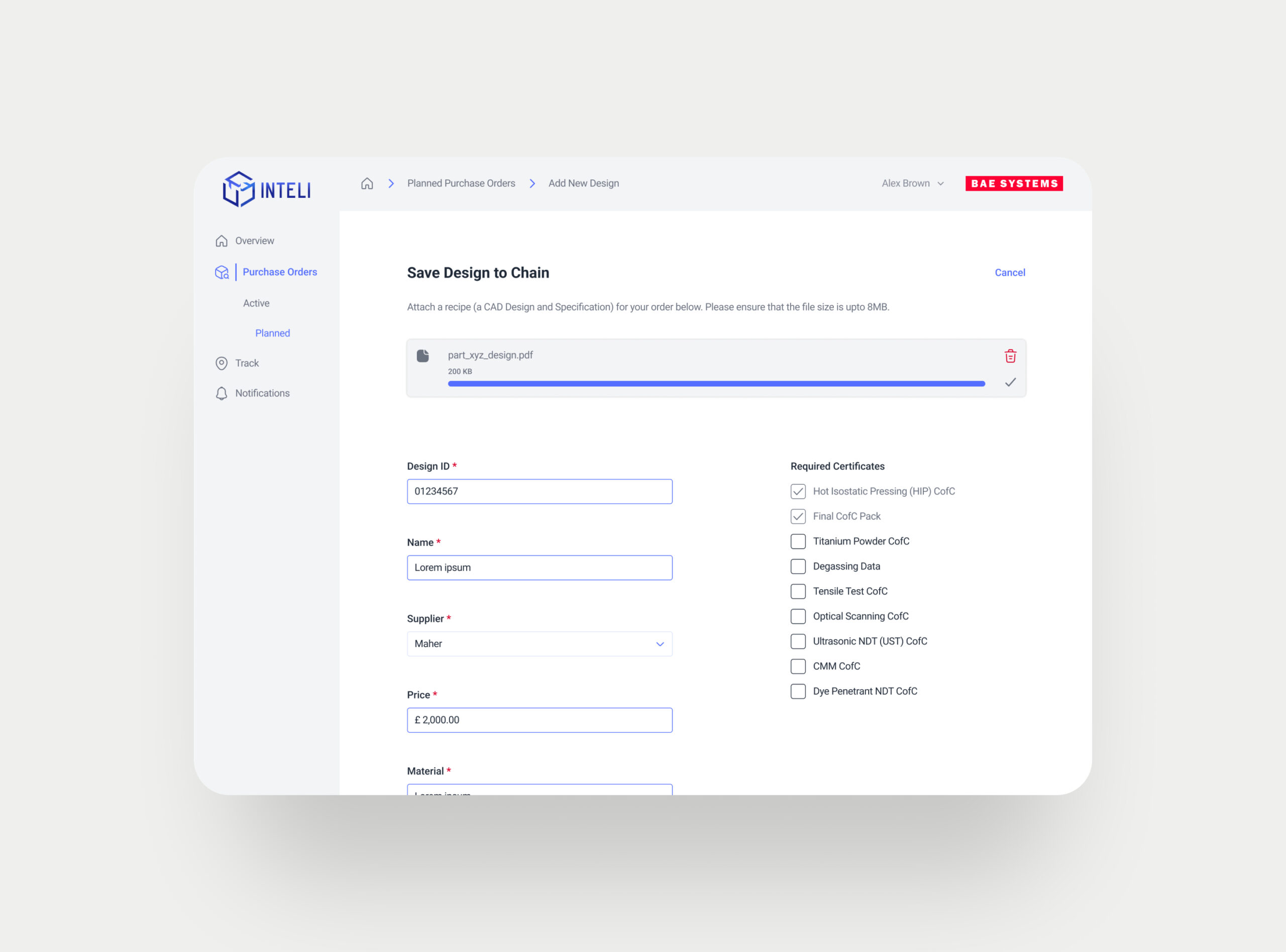
design system
Ensuring a Seamless Experience: INTELI’s Design Foundation
A comprehensive design system ensured consistency and efficient development:
- Color Palette: Aligned with industry standards, emphasizing clarity and information hierarchy.
- Icons: Intuitive iconography to support actions and statuses.
- Buttons, Fields, Filters: Designed for ease of use and error prevention.
